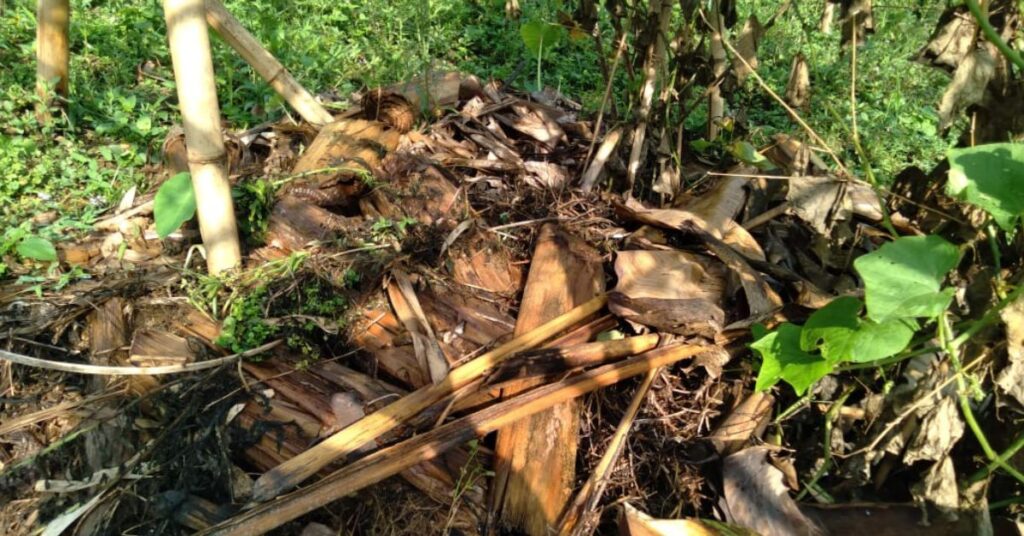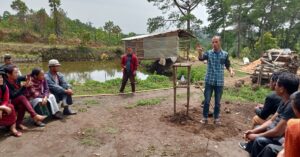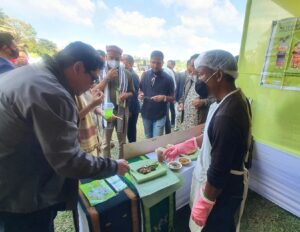Located in the West Garo Hills District of Meghalaya, Tosekgre is a small agrarian community that largely depended on shifting cultivation as a means of subsistence. The community is an active participating village of NESFAS and is currently taking part in the ongoing NESFAS project, “Empowering Indigenous Communities through Agroecology Learning Circles (ALCs) for resilient, integrated and innovative natural resource management”, which is supported by MBMA and funded by the World Bank.
Over the years, it has been found that shifting cultivation had decreased to a significant extent with reduced land size and fallow land. As a result, many staple crops like millet were no longer in cultivation in the community. When questioned as to why this had happened, the Nokma or the headman of the village stated that many of the forests had been converted into cash crop plantations and the forest cover was scanty to continue shifting cultivation, leaving a fallow period of only 2-3 years, which was also limited to few households.
This situation is a threat to the community as there is a possibility of losing the local seeds, and also giving rise to food insecurity. Cash crops generated profit for only a season in a year and could not be utilized to meet the nutritional needs of the people. The community that had for so long relied on their traditional food systems did not want to make themselves dependent on the food sources available in the markets as they were laden with chemicals. Therefore, having little choice, the members of Tosekgre community turned to kitchen gardening, as a means of subsistence and also for the preservation of local seed varieties. The harvests from their kitchen gardens would not only be used for their own consumption, but they would also sell the surplus to generate income when the cash crops were not in season. It dawned on them that cash crops would not serve their best interests in the long run and hence, they decided to have shifting cultivation, kitchen gardening and cash crop cultivation simultaneously. Orange and other citrus varieties were also incorporated into the plantations. Chayote was also majorly grown in the community.
However, this year, the state faced a severe issue of dry spells and delayed monsoons for months during the growing season. Many communities in Garo Hills were affected, and shifting field farmers were perhaps the worst hit because these local food systems are mainly rainfed. Seedlings that were growing, wilted and dried up as rains evaded the land. To add to the farmers’ woes, even homestead gardens found it challenging to survive the dry season. Even when it did rain, it fell in sporadic trickles, leaving the land arid and dry.
In the midst of this chaos, there was one ALC member who stood out. Roblin Sangma made the best use of the natural resource in his surroundings- banana stems, without spending a single penny. Banana trees are plentiful in rural Garo communities, and Roblin Sangma cut down some of these trees and chopped the stems into smaller pieces which he then used to mulch the soil. It was an age-old method which was practised by the older generations in earlier times. Banana stems are known to not only retain moisture which saves the crops from drying out but also decompose and add to the fertility of the soil. Roblin Sangma used this traditionally learned knowledge to his advantage and saved his chayote crops. This method of mulching can be applied to other crops as well, and had more people been aware or had employed these methods, more shifting fields and more homestead gardens would have been saved in the wake of the dry spells.

There is a need to identify these farmers and tap their knowledge so as to address modern-day problems in traditional ways. Creating awareness of Indigenous Peoples’ Food Systems will help the world to combat the issues of food insecurity in this growing era of climate change.





